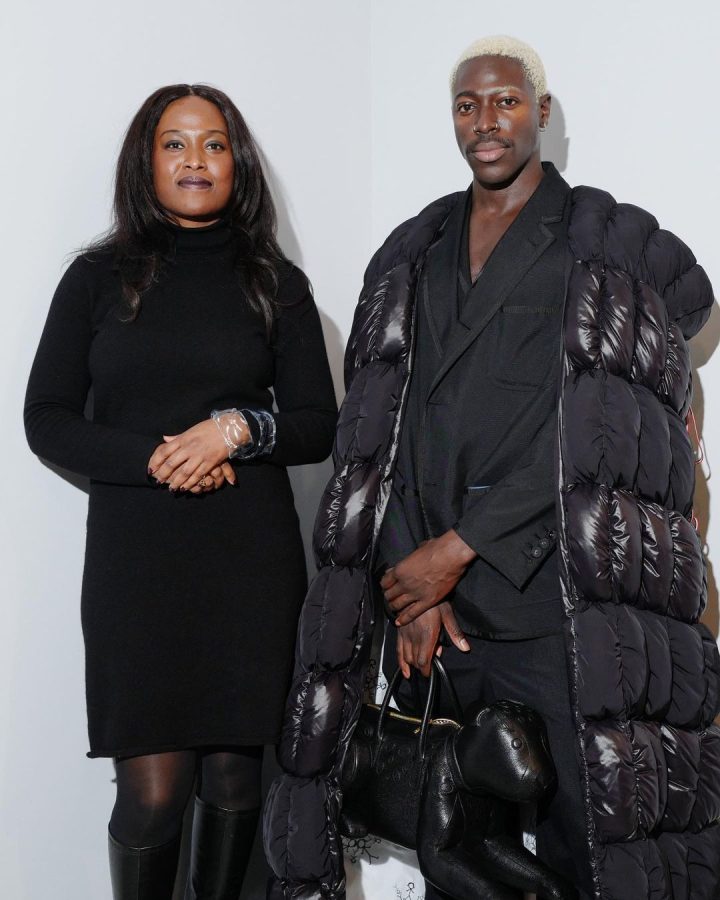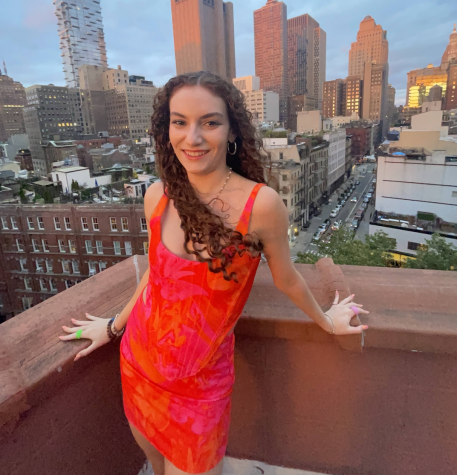Moses Sumney opens first gallery show at Nicola Vassell Gallery
February 25, 2022
Singer Moses Sumney opened his first gallery show, titled “Blackalachia,” on Feb. 3 at Nicola Vassell Gallery. Located in Chelsea, the show features both the concert film “Blackalachia” and a short gallery walk of photographic prints of and by Sumney.
“Blackalachia” premiered on Dec. 8, 2021 on YouTube, and shortly thereafter, Sumney released the accompanying live album, “Live From Blackalachia,” on Dec. 10. The concert was filmed with a minimal crew in the Blue Ridge Mountains in 2020 and features songs from Sumney’s critically acclaimed double LP “græ.”
On opening night, Sumney appeared to greet and thank visitors in a custom all-black Thom Browne ensemble, featuring a floor-length puffer coat cape and the brand’s emblematic Hector Bag–named and styled after Browne’s dog. Notable figures in attendance included writer Antwaun Sargent, and models Parker Kit Hill and Emily Ratajkowski.
Students will find that the Nicola Vassell Gallery is a stark image against the backdrop of the city, a white minimalist block viewing the south end of the High Line. Upon entry, the only shield from the outside is a thick black curtain as you enter Blackalachia, a world free of binaries and full of possibilities. One can choose to watch the film in its entirety or wander from the gallery and back to the film area during their stay.
The concert plays out on a wide projection screen, with percussive elements from the street and audience members, like horns honking and seats shifting, embellishing the film’s quiet yet pronounced nature. The film’s cinematography, handled by Cristina Dunlap, juxtaposes high-definition performance scenes against a backdrop of lush foliage with lo-fi and claustrophobic shots in near darkness, often lingering on the musician’s piercing gaze. Each scene is meticulously crafted to the singer’s aesthetic, from the simple yet effective wardrobe to the new arrangements of each song, and even the choice of which hue of lighting veils the band during each performance.
After the film, which ends with a poignant performance of “Polly,” visitors can view a series of eight photo prints in the gallery. Photos include a monochromatic image of Sumney standing within a basketball hoop (titled “Poor Sport I”) and a confined headshot nearly devoid of all color minus a highlight across Sumney’s cheekbone (“Look Down”).
While each photo’s composition is designed to focus on Sumney’s symbiosis within nature, art connoisseurs will notice that each print is displayed in a frame of highly reflective glass. Intentional or not, the reflection forces the viewer to look beyond Sumney and instead at themselves as a critic and disciple of Sumney’s art.
Sumney’s work is defined by the innate desire and fear of solitude. In September of last year, the artist opened the audiovisual immersive experience “technoechophenomena” at Red Hook Labs, allowing a person to manipulate his music within their own parameters and imagination, and it was no surprise the initial lockdown allowed Moses to create “græ” and “Blackalachia.”
In speaking to Artnet News, he said, “What I kept returning to in my writing was loneliness and standing outside the club… singularity is the frame through which I approach life, my own idiosyncratic nature.” Often during the gallery walk, one will catch the eye of another person in the mirrored glass walking behind themselves, while at times awkward, it is an equally humanizing aspect of the installation, through this removal of comfort.
“Blackalachia” is on display until March 5, with showings beginning at 10:30 a.m. every day. Admission is free, and visitors are required to provide proof of vaccination along with a valid photo ID. Moses Sumney will make his next appearance in New York City on March 30, with a performance of “Blackalachia” alongside L’Rain, as part of the Brooklyn Academy of Music’s (BAM) new program curated by Hanif Abdurraqib.












